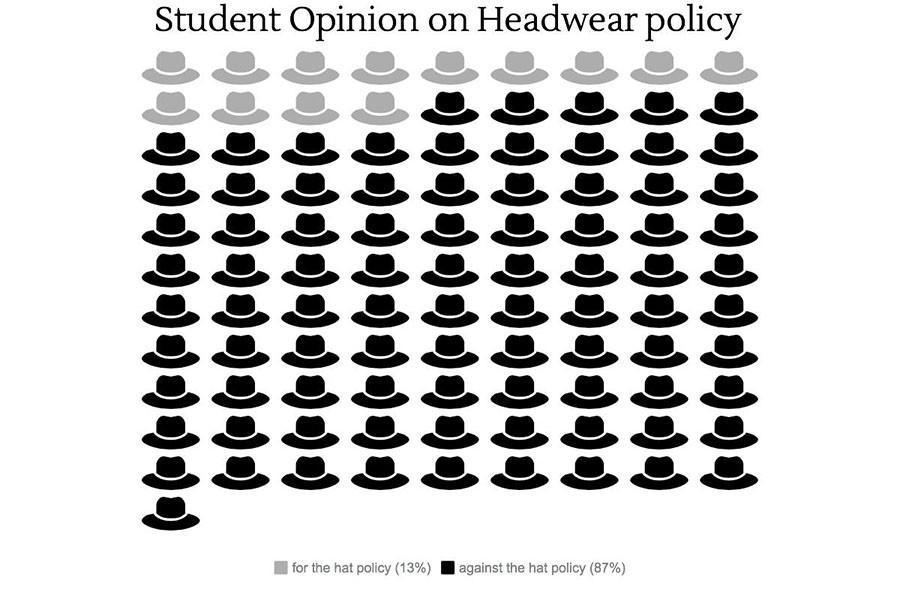Headwear policy under scrutiny
In a survey done by the Southerner, 96 out of 110 students agreed that there shouldn’t be a headwear policy at South.
April 18, 2016
“Hats off, I.D’s out,” call out the security guards as students walk through the doors bright and early in the morning.The headwear policy is one of the most contested policies in the building. Through simple banter, students, teachers and security guards go head to head about the logistics of the policy daily.
But these conversations often end without resolution and add unnecessary tension to the already chaotic life at South. How does this tension affect the dynamic between South officials and students?
Now, department chairs have recommended a change to the policy, and administration is in the midst of making a decision on it.
“Whenever we try to make sweeping decisions, we want to get all the players involved, the teachers, staff, students, and administration,” said Assistant Principal Michael Luseni. “The teachers have voted on what they want to see happen, and we are taking their vote into consideration,” he added. The administration has to make sure that the new policy is in line with district policy as well.
Many South’s students are against the policy. In a survey done by the Southerner, 96 out of 110 students agreed that there shouldn’t be a headwear policy at South, with reasons ranging from “headwear is a safe way for students to express themselves” to “headwear isn’t that big of a deal.”
“The biggest advantage for myself if we didn’t have this policy is that student and teacher relationships would become stronger because there wouldn’t be unnecessary conflict,” said Vince Patton, a social studies teacher for the All Nations program. “The headwear policy is a long tradition that I had to grow up with, no hoods no hats, anything like that,” Patton continued.
However, some teachers consider hat and hoodie wearing a distraction from learning.
“A lot of institutions have policies like this,” said David Rathbun, an English teacher at South. “It’s just another distraction. To have an academic atmosphere you want to reduce distractions,” he continued.
Another concern with allowing hat wearing is that hats and headwear may be associated with gang activity.
“As a social studies and history teacher, I totally understand the rhetoric behind the headwear policy [in regards] of gangs related affiliation, and that was a concern, 10 to 15 years ago. But I feel like our society and neighborhood has changed a lot. Yes, there are still these signs of gang affiliation, yet I don’t think wearing a hat is gonna lead to that, not right now,” Patton explained.
The consequences for wearing a hat to school are also up for debate.
“I don’t think we want to become that kind of school,” said Luseni in reference to strict consequences for wearing hats.
In addition, many teachers don’t consider enforcing the hat policy as a priority in their day to day teaching.
“As a teacher, I have many things I have to battle everyday, and one thing I choose not to battle everyday is a hood or a hat because there are varying issues that students are facing that go a little deeper than having your hood on or hat on,” Patton said.
“Whatever decision we make, I hope we come up with a way to move forward,” expressed Luseni. With a significant amount of students against the headwear policy, this decision to alter the policy will be awaited by faculty and hat-wearers alike.






